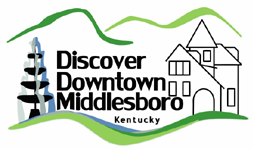 |
| Storm Cunningham |
Middlesboro, Kentucky, March 21, 2013 – Downtown Middlesboro will host internationally recognized
revitalization expert Storm Cunningham on April 19 and 20, 2013. Mr. Cunningham
is author of the Restoration Economy
and ReWealth, and CEO of ReCitizen,
L3C. His website ReCitizen.org is
transforming the way people revitalize places by utilizing “crowd”
technologies.
Storm will kick off a strategic plan for downtown Middlesboro on
Friday, April 19, at 6 p.m. with a one-hour talk at Lincoln Memorial
University, in the Math and Science Building Room 100. During his talk
and the question and answer session to follow, he will share the potential of crowdmapping
(to perceive opportunities), crowdsourcing (to design projects), and
crowdfunding (to launch projects) to put tools into the hands of citizens to revitalize
their own communities.
The
following day, the strategic planning will begin with a community leaders
workshop facilitated by Mr. Cunningham. In the following months faculty and
students from Lincoln Memorial University School of Business will analyze
feedback and conduct additional research to prepare the formal strategic plan.
The plan is expected to be completed around September.
Middlesboro
will be one of just a few pilots nationally to use the new technology that Mr.
Cunningham has developed at ReCitizen.org.
Subsequent to the planning exercise Mr. Cunningham has also agreed to
use Middlesboro as an example of successful community-led revitalization
efforts nationally.
In addition
to using ReCitizen.org in preparation of the strategic plan, upon completion of
the plan ReCitizen.org will help with implementation of projects people have
identified as priorities for them.
This event is made possible through the generous financial
support of the Appalachian Regional Commission and the National Trust for
Historic Preservation. Other partners include Appalachian Regional
Healthcare – Middlesboro, Bell County, Bell County Chamber of Commerce, Bell
County Historical Society, City of Middlesboro, Kentucky Heritage Council,
Kentucky League of Cities, Kentucky Main Street Program, Kentucky Small
Business Development Center, Lincoln Memorial University, Preservation
Kentucky, and TourSEKY.
Contact:
Isaac D. Kremer, Executive Director
Discover Downtown Middlesboro, Inc.
(606) 248-6155
###

